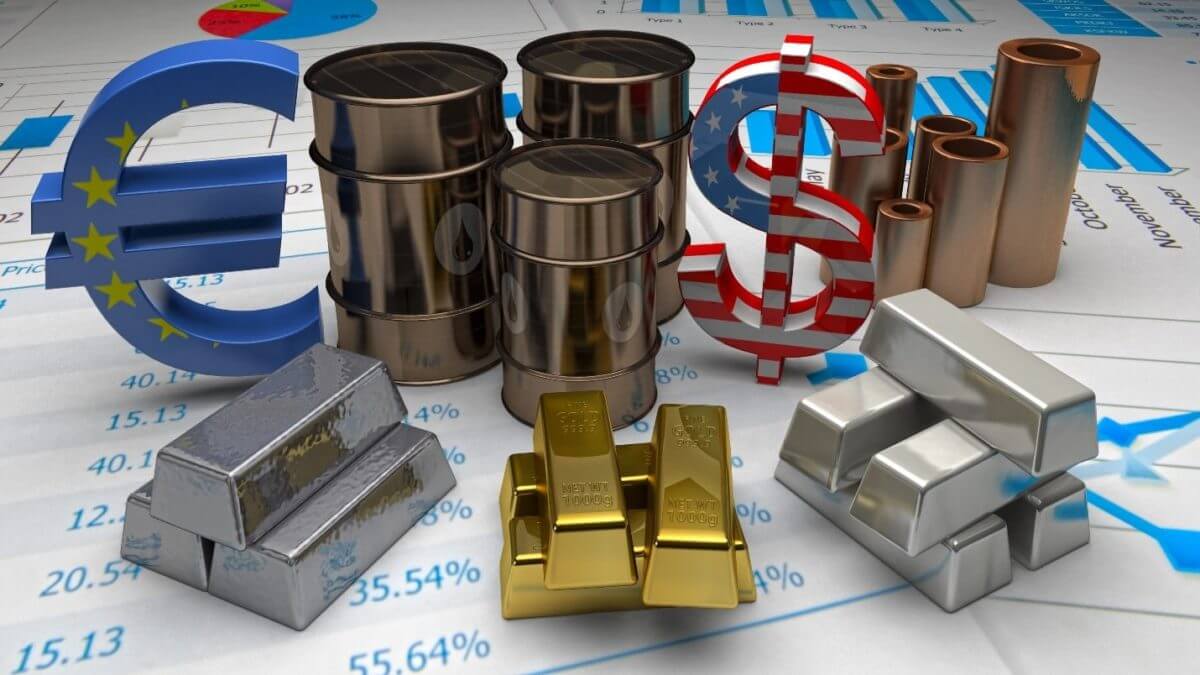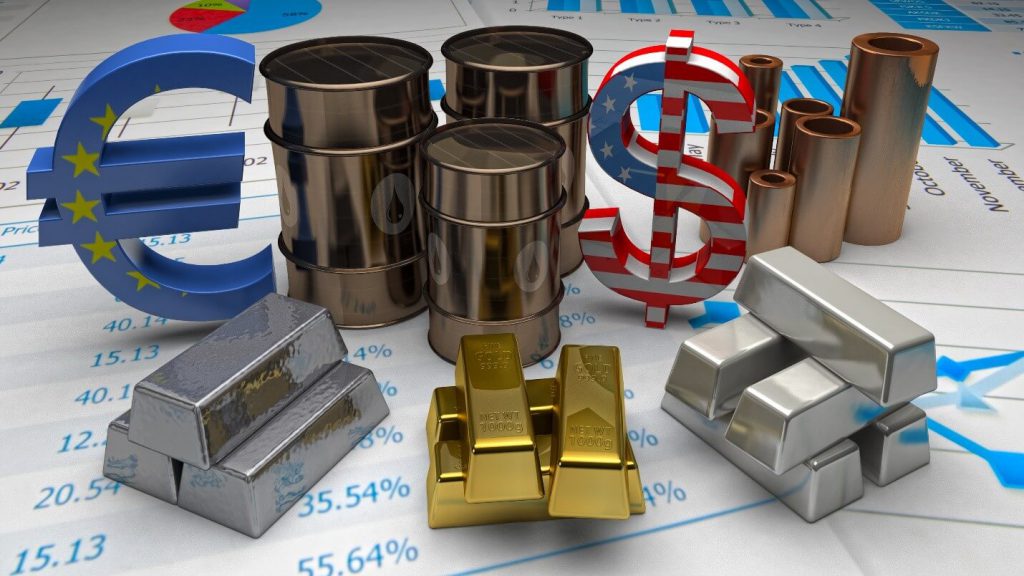
Precious metals advanced amid economic uncertainty
Highlights:
- ENERGY:
Brent crude slipped by 51 cents, at $69.00 per barrel. Meanwhile, the WTI slid by 52 cents to $66.77 a barrel.
Natural gas prices spiked in Europe and Asia. - METALS:
Gold advanced by 0.4% at $1,794.38 per ounce.
Silver is trying to settle above the resistance level at $23.8.
Copper stood at $9,440 last time. - AGRICULTURAL:
Corn futures for September slipped by 3½¢ to close at $5.64¾ a bu.
Soybeans futures contract for September added 3¢ to close at $13.76 a bu.
Oil corrected gains amid demand worries
Oil prices trimmed earlier gains since worries over slowing demand outweighed expectations that oil producers will not increase supply any time soon.
Brent crude slipped by 51 cents, at $69.00 per barrel. Meanwhile, the WTI slid by 52 cents to $66.77 a barrel.
OPEC and other producers believe that oil markets do not need more oil than they plan to release in the coming months.
In July, China’s factory output and retail sales growth slowed sharply and missed expectations, as new COVID-19 outbreaks and floods disrupted businesses.
On the supply side, US shale oil production is forecast to increase to 8.1 million barrels per day in September. According to the government data, it’s the highest level since May 2020.
Last week, US President Joe Biden’s administration proposed the OPEC to expand oil output to tackle growing gasoline prices. The US government sees it as a threat to global economic recovery.
European natural gas reached a new record
Natural gas has risen again during Monday and has continued with the upward trend.
European natural gas prices set records on Monday as Russian pipeline imports were poised to fall further next month, increasing fears that the continent would be short of supplies this winter as storage inventories remain low.
Rising European benchmarks helped support spot LNG prices in Asia on Monday, reaching $17/MMBtu. Despite new coronavirus outbreaks in Japan and China, Asian buying remains strong ahead of the winter heating season.
Gold price continues to rise amid uncertainty
Gold extended its winning streak and advanced by 0.4% at $1,794.38 per ounce. Meanwhile, US gold futures also added 0.4% to $1,796.30.
The manufacturing activity index, released by the Federal Reserve, fell to 18.3 in August, below the average analyst estimate of 29.0. It was also well below the level of 43 reached in July.
Despite the decline, the level of the indicator still reflects an economic expansion in the region.
A third of the companies surveyed consider that economic conditions improved in the month, while 16% believe they worsened.
Failures in the distribution chain and the growth of Covid-19 cases with the Delta variant were the main causes for the drop in activity.
According to a Reuters survey of various precious metals analysts, the price of gold will remain around $1,830 an ounce for 2021, before dropping slightly over the next year. For the year, the metal price will average $1,812 an ounce, while in 2022, it will drop to $1,785.
These are slightly higher predictions than those recorded in a similar survey conducted last April.
As for silver, analysts believe it will average $26.50 an ounce in 2021
and around $25 an ounce in 2022.
Silver is both a haven like gold as a metal widely used in industry. According to Suki Cooper, an analyst at Standard Chartered, silver will benefit from the electrification process due to its use in the manufacture of solar panels, electric vehicles, and charging points.
The white metal is currently trying to settle above the resistance level at $23.8. Meanwhile, the US dollar is under intense pressure against a broad basket of currencies.
Chilean copper mines have suspended their production due to the strike. Besides, Canadian mines ceased because of wildfires.
However, the copper price has spent August bouncing around $9,500-per-tonne level. It stood at $9,440 last time.
The condition of soybeans and corn continues to deteriorate in the US
In its weekly crop report, the United States Department of Agriculture revealed a reduced ratio of good/excellent corn and soybeans.
In soybeans, the reduction was 2% since it went from 64 to 62%. Meanwhile, in corn, the decrease was 3%, falling from 60 to 57%. In both cases, the current condition remained below the levels a year ago.
On Monday, corn futures for September slipped by 3½¢ to close at $5.64¾ a bu. Meanwhile, soybeans futures contract for September added 3¢ to close at $13.76 a bu.


